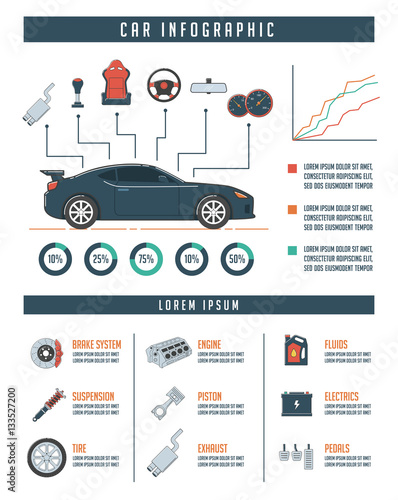Comprehending The Significance Behind Your Car'S Warning Lights: A Comprehensive Look
Comprehending The Significance Behind Your Car'S Warning Lights: A Comprehensive Look
Blog Article
Written By-Higgins Torres
When you lag the wheel, those glowing warning lights on your dashboard can be a little bit puzzling. Do you understand what they're trying to inform you regarding your auto's health and wellness? Comprehending the significance of these lights is vital for your security and the longevity of your lorry. So, the next time one of those lights turns up, would not you intend to decode its message precisely and take the essential steps to address it?
Common Caution Lighting and Interpretations
Recognize usual warning lights in your automobile and recognize their significances to guarantee risk-free driving.
The most regular warning lights include the check engine light, which signals problems with the engine or discharges system. If this light comes on, it's important to have your automobile examined promptly.
The oil stress warning light suggests reduced oil pressure, needing instant focus to avoid engine damages.
A blinking battery light may recommend a damaged charging system, potentially leaving you stranded otherwise addressed.
The tire stress surveillance system (TPMS) light signals you to low tire pressure, influencing automobile stability and fuel performance. Disregarding this can lead to hazardous driving conditions.
The abdominal light shows an issue with the anti-lock braking system, endangering your capacity to stop rapidly in emergencies.
Finally, the coolant temperature level alerting light warns of engine getting too hot, which can result in severe damages otherwise settled quickly.
Comprehending these common caution lights will assist you address concerns immediately and maintain safe driving problems.
Relevance of Prompt Attention
Comprehending the common caution lights in your vehicle is only the first step; the value of without delay attending to these warnings can't be stressed enough to guarantee your security when driving.
When a warning light brightens on your control panel, it's your car's means of communicating a potential issue that requires interest. Ignoring these warnings can result in a lot more serious issues in the future, compromising your safety and potentially costing you much more in repairs.
Trigger interest to advising lights can protect against break downs and crashes. For example, a blinking check engine light could suggest a misfire that, if left neglected, could cause damage to the catalytic converter. Addressing https://www.france24.com/en/live-news/20220603-saudi-women-move-from-behind-wheel-to-under-the-hood without delay can save you from an expensive fixing.
Similarly, a brake system warning light may signify low brake fluid or worn brake pads, important parts for your security when driving.
DIY Troubleshooting Tips
If you discover a caution light on your control panel, there are a couple of DIY troubleshooting ideas you can try before looking for specialist assistance.
The initial step is to consult your auto's handbook to recognize what the details caution light indicates. Often https://oil-change-places-near-me61504.blogunok.com/32341424/examine-your-vehicle-s-needs-to-find-the-best-vehicle-outlining-service-for-you-however-which-aspects-will-absolutely-affect-your-decision can be as simple as a loose gas cap activating the check engine light. Tightening the gas cap might deal with the problem.
One more typical issue is a reduced battery, which can set off numerous advising lights. Inspecting the battery links for rust and ensuring they're safe might repair the problem.
If a warning light persists, you can attempt resetting it by detaching the automobile's battery for a few mins and after that reconnecting it. Additionally, examining your car's liquid levels, such as oil, coolant, and brake liquid, can aid repair advising lights associated with these systems.
Final thought
In conclusion, recognizing your auto's warning lights is essential for maintaining your automobile running smoothly and safely. By promptly resolving these signals and recognizing what they imply, you can stay clear of expensive repair services and potential malfunctions.
Remember to consult your auto's manual for particular information on each alerting light and act accordingly to make sure a hassle-free driving experience.
Stay informed, remain risk-free when driving!
